I. On International Workers’ Day, Gandhi from Kochi
Series of five paintings
‘…this painting is based on a photograph taken in 1931, when Gandhi was 62 years old. He was travelling from India to England on a ship to take part in the Second Round Table Conference, which he attended as the sole official Congress representative.
Gandhi didn’t die of fever, he was murdered. At a time when history is being reinterpreted for political mobilisations and power gains and when the perception of politics is manipulated through well-designed commercial campaigns, it’s very important to fight back with icons like Gandhi for counterargument by juxtaposing our time with his principles and the ideologies that he stood for. Here Gandhi is painted, but a Marxian presence is celebrated.
I’d like to paraphrase Anita Thampi, one of the leading poets of Kerala, that the Gandhi figure is a marvellously simple one that submits itself easily both to the doodling child and to the master artist; so minimal that a dot or a line cannot simplify it further—an inner and outer simplicity and a stark directness of this figure can readily lure anyone to make it their logo. This figure can easily mislead anyone into thinking that it can be used any which way.
But the historical gravity and political vitality the symbol wields are not that simple; nor is its intellectual and spiritual depth so light. In Gandhi’s case, the tactic of blacking out something that refuses to succumb by appropriating it is not going to work. Because, Gandhi is a rhizomatic image that is too sharp for such manipulations.
And Gandhi appears in our lives as a constant reminder of non-violence and tolerance. So it is in this site that Gandhi is positioned as an icon of resistance and fearlessness, which is the most important political weapon we should carry. It’s my attempt to reclaim fearlessness.’
Riyas Komu, Frontline
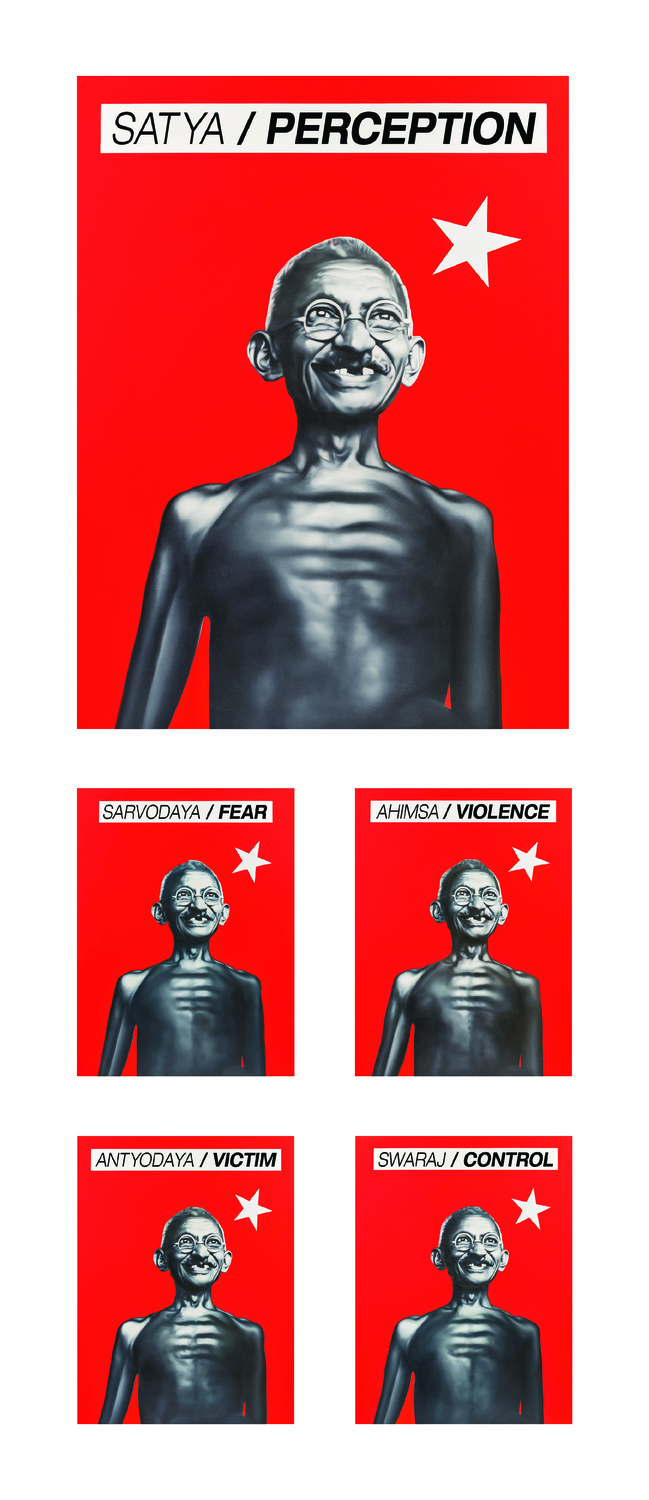
Oil on canvas; 183 cms x 137 cms (each); 2015
II. Elysian I and II
‘‘Political art’ is not a category, it is a wide-ranging argument. It defies easy categorisation because many of the artists, while not being explicitly political, are, in fact, responding to the times in their own way. So I don’t think political art needs to have the obviousness of protest or activism…’
Riyas Komu, Indian Express
Charred wood, metal and automotive paint; 74 cms x 82 cms x 74 cms; 2002
Charred wood, metal and automotive paint; 74 cms x 82 cms x 74 cms; 2002
III. Watching the Other-world Spirits from the Gardens of Babylon
‘… It can be subdued and be indirect. And many people’s politics is not with the State, it’s with their community, with issues of discrimination or with issues that are generally not discussed…’
 Wood, concrete, metal, and automotive paint; 175 cms x 312 cms x 99 cms; 2007
Wood, concrete, metal, and automotive paint; 175 cms x 312 cms x 99 cms; 2007
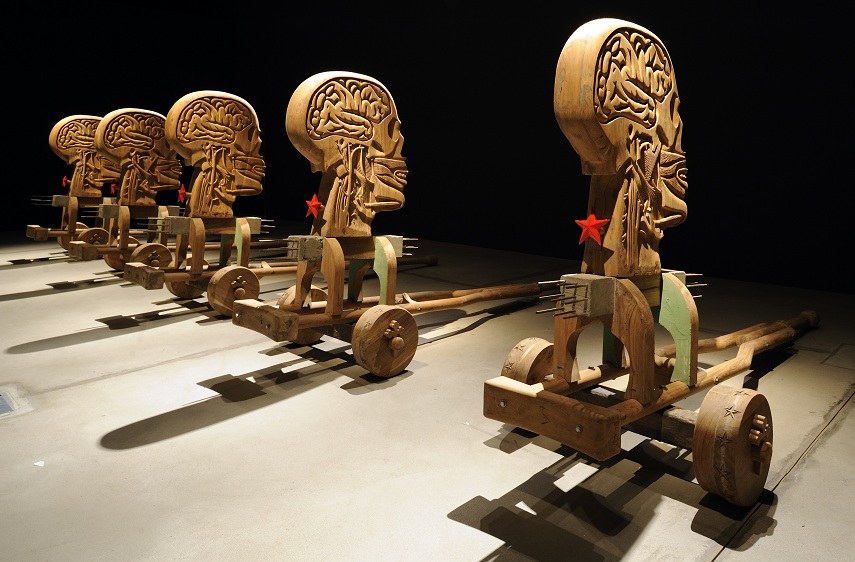 Wood, concrete, metal, and automotive paint; 175 cms x 312 cms x 99 cms; 2007
Wood, concrete, metal, and automotive paint; 175 cms x 312 cms x 99 cms; 2007
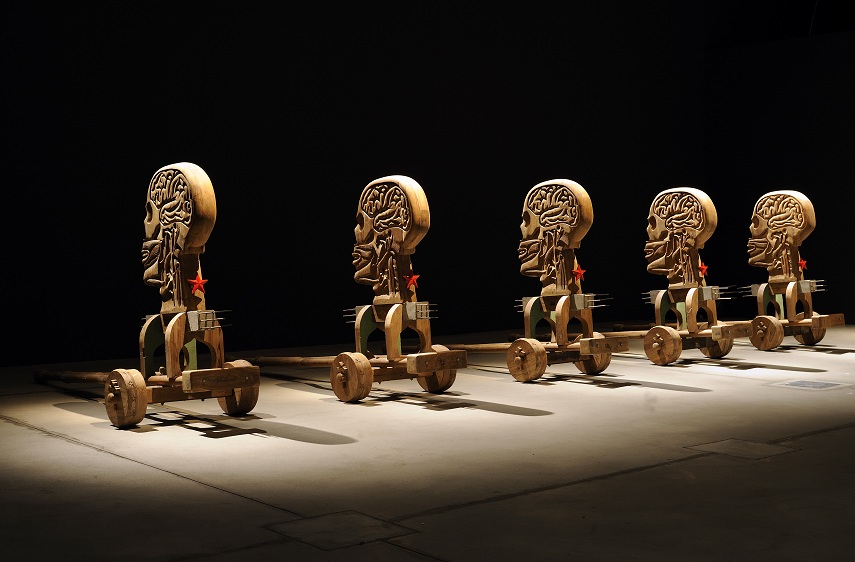 Wood, concrete, metal, and automotive paint; 175 cms x 312 cms x 99 cms; 2007
Wood, concrete, metal, and automotive paint; 175 cms x 312 cms x 99 cms; 2007
IV. Undertakers
‘…sometimes it’s with art itself. Wouldn’t that also be political art? I am unsure as how to define or identify political art in a time like this…’
 Wood, iron and automotive paint; 120 cms x 105 cms x 61 cms, total length is 1829 cms; 2008
Wood, iron and automotive paint; 120 cms x 105 cms x 61 cms, total length is 1829 cms; 2008
 Wood, iron and automotive paint; 120 cms x 105 cms x 61 cms, total length is 1829 cms; 2008
Wood, iron and automotive paint; 120 cms x 105 cms x 61 cms, total length is 1829 cms; 2008
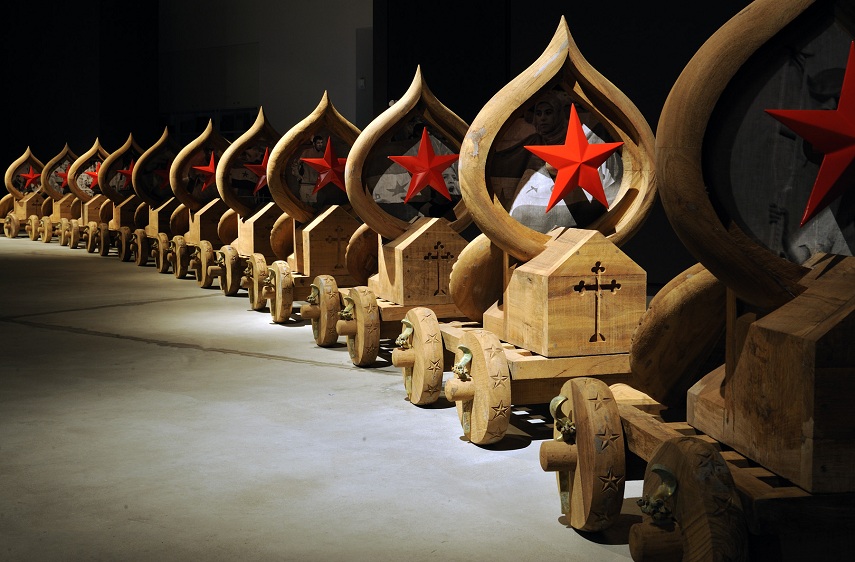 Wood, iron and automotive paint; 120 cms x 105 cms x 61 cms, total length is 1829 cms; 2008
Wood, iron and automotive paint; 120 cms x 105 cms x 61 cms, total length is 1829 cms; 2008
V. Two Fathers from Gujarat
‘I don’t think we should overstate what art can do in a society, whether political or not…’
 Aluminium; 17.5 cms x 24 cms x 3 cms; 2011
Aluminium; 17.5 cms x 24 cms x 3 cms; 2011
VI. Oils Well, Let’s Play
‘…But since only art can do what it can do, we must also protect it.’
 Recycled wood, metal, cement; 266.7 x 383.5 x 89 cms; 2011
Recycled wood, metal, cement; 266.7 x 383.5 x 89 cms; 2011
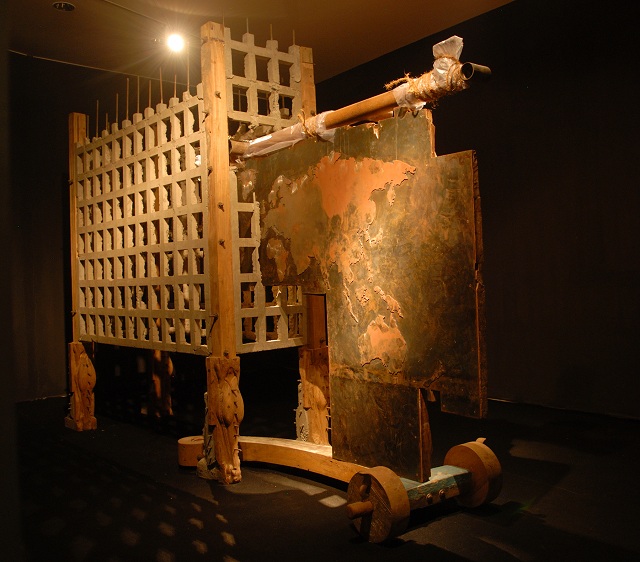 Recycled wood, metal, cement; 266.7 x 383.5 x 89 cms; 2011
Recycled wood, metal, cement; 266.7 x 383.5 x 89 cms; 2011


